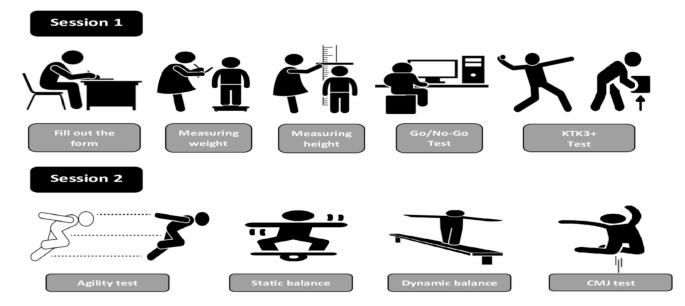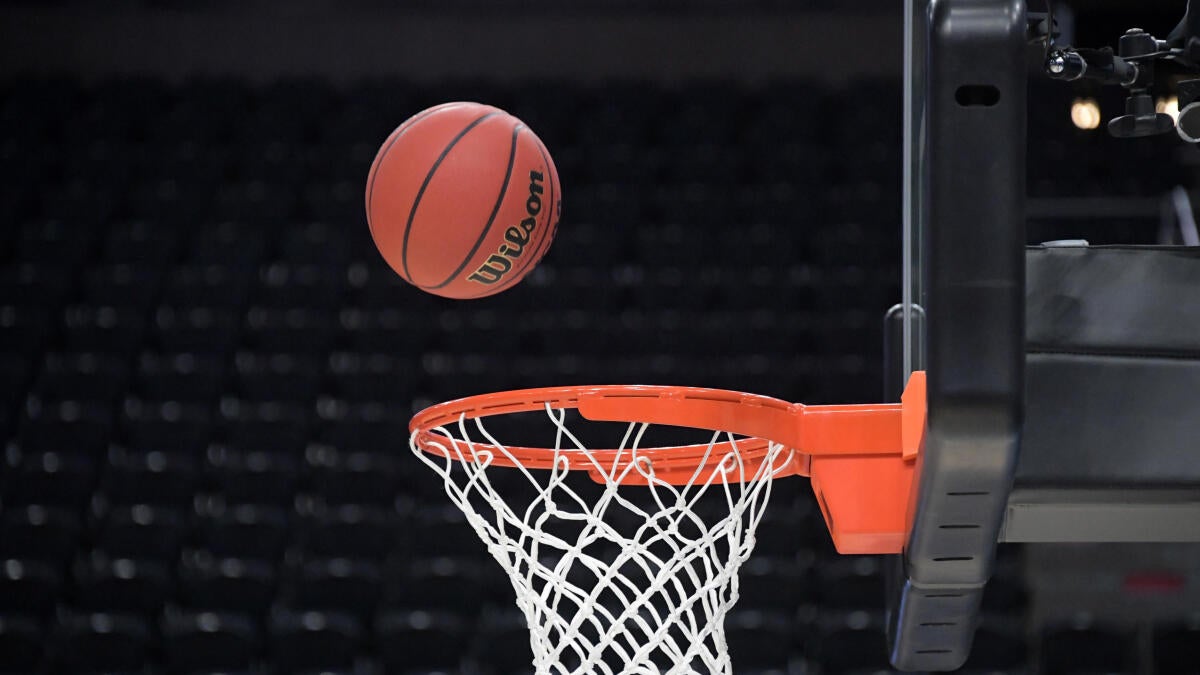Fitness
The effects of structured coordinative exercise protocol on physical fitness, motor competence and inhibitory control in preschool children – Scientific Reports

Schmidt, R. A. Motor Learning & Performance: from Principles to Practice (Human kinetics books, 1991).
Goodway, J. D., Ozmun, J. C. & Gallahue, D. L. Understanding Motor Development: Infants, Children, Adolescents, Adults (Jones & Bartlett Learning, 2019).
Janssen, I. & LeBlanc, A. G. Systematic review of the health benefits of physical activity and fitness in school-aged children and youth. Int. J. Behav. Nutr. Phys. Act. 7(1), 1–16 (2010).
Timmons, B. W. et al. Systematic review of physical activity and health in the early years (aged 0–4 years). Appl. Physiol. Nutr. Metabolism 37(4), 773–792 (2012).
Carson, V. et al. Systematic review of the relationships between physical activity and health indicators in the early years (0–4 years). BMC Public. Health 17(5), 33–63 (2017).
Van Capelle, A., Broderick, C. R., van Doorn, N., Ward, R. E. & Parmenter, B. J. Interventions to improve fundamental motor skills in pre-school aged children: a systematic review and meta-analysis. J. Sci. Med. Sport 20(7), 658–666 (2017).
Pate, R. R. et al. 2018 Physical Activity Guidelines Advisory Committee. Physical activity and health in children under 6 years of age: a systematic review. Med. Sci. Sports Exerc. 51(6), 1282 (2019).
World Health Organization Guidelines on Physical Activity. Sedentary Behaviour and Sleep for Children under 5 Years of Age. https://apps.who.int/iris/handle/10665/311664 (Accessed 6 Feb 2024).(2019).
Tucker, P. The physical activity levels of preschool-aged children: a systematic review. Early Child. Res. Quart. 23(4), 547–558 (2008).
Pate, R. R. et al. Prevalence of compliance with a new physical activity guideline for preschool-age children. Child. Obes. 11(4), 415–420 (2015).
Willoughby, M. T., Wylie, A. C. & Catellier, D. J. Testing the association between physical activity and executive function skills in early childhood. Early Child. Res. Quart. 44, 82–89 (2018).
Abrignani, M. G. et al. Cardiovascular Prevention Area, Young cardiologists Area, and Paediatric Cardiology Task Force of the Associazione Nazionale Medici Cardiologi Ospedalieri (ANMCO), and Heart Care Foundation. Lifestyles and cardiovascular prevention in childhood and adolescence. Pediat Cardiol. 40, 1113–1125 (2019).
Faienza, M. F. et al. Childhood obesity, cardiovascular and liver health: a growing epidemic with age. World J. Pediat 16, 438–445 (2020).
Iivonen, K. S. et al. Relationship between fundamental motor skills and physical activity in 4-year-old preschool children. Percept. Mot. Skills 117(2), 627–646 (2013).
Zeng, N. et al. Effects of physical activity on motor skills and cognitive development in early childhood: a systematic review. BioMed. Res. int. (2017).
Utesch, T., Dreiskämper, D., Strauss, B. & Naul, R. The development of the physical fitness construct across childhood. Scan J. Med. Sci. Sports 28(1), 212–219 (2018).
Latorre-Román, P. A., Mora‐López, D. & García‐Pinillos, F. Effects of a physical activity programme in the school setting on physical fitness in preschool children. Child Care Health Dev. 44(3), 427–432 (2018).
Stodden, D. F. et al. E. A developmental perspective on the role of motor skill competence in physical activity: an emergent relationship. Quest 60(2), 290–306 (2008).
Robinson, L. E. et al. Motor competence and its effect on positive developmental trajectories of health. Sports med. 45, 1273–1284 (2015).
Cattuzzo, M. T. et al. Motor competence and health related physical fitness in youth: a systematic review. J. Sci. Med. Sport 19(2), 123–129 (2016).
Luz, C., Rodrigues, L. P., Meester, A. D. & Cordovil, R. The relationship between motor competence and health-related fitness in children and adolescents. PLoS One 12(6), e0179993 (2017).
Haga, M. The relationship between physical fitness and motor competence in children. Child Care Health Dev. 34(3), 329–334 (2008).
Haga, M., Gísladóttír, T. & Sigmundsson, H. The relationship between motor competence and physical fitness is weaker in the 15–16 year. Adolescent age group than in younger age groups (4–5 year.and 11–12 year. Percept. Mot. Skills 121(3), 900–912 (2015).
Utesch, T., Bardid, F., Büsch, D. & Strauss, B. The relationship between motor competence and physical fitness from early childhood to early adulthood: a meta-analysis. Sports Med. 49, 541–551 (2019).
Ludyga, S., Pühse, U., Gerber, M. & Herrmann, C. Core executive functions are selectively related to different facets of motor competence in preadolescent children. Europ J. Sport Sci. 19(3), 375–383 (2019).
Nieto-López, M., Sánchez-López, M., Visier-Alfonso, M. E., Martínez-Vizcaíno, V. & Jiménez-López, E. Álvarez-Bueno, C. Relation between physical fitness and executive function variables in a preschool sample. Pediat Res. 88(4), 623–628 (2020).
Veraksa, A., Tvardovskaya, A., Gavrilova, M., Yakupova, V. & Musálek, M. Associations between executive functions and physical fitness in preschool children. Front. Psychol. 12, 674746 (2021).
Gandotra, A. et al. A meta-analysis of the relationship between motor skills and executive functions in typically-developing children. J. Cogni Dev. 23(1), 83–110 (2022).
Chou, Y. et al. Chinese preschool children’s physical fitness, motor competence, executive functioning, and receptive language, math, and science performance in Kindergarten. Child. Youth Serv. Rev. 136, 106397 (2022).
Wick, K., Kriemler, S. & Granacher, U. Associations between measures of physical fitness and cognitive performance in preschool children. BMC Sports Sci. Med. Rehabil 14(1), 80 (2022).
Malambo, C., Nová, A., Clark, C. & Musálek, M. Associations between fundamental movement skills, physical fitness, motor competency, physical activity, and executive functions in pre-school age children: a systematic review. Children 9(7), 1059 (2022).
MacNamara, Á., Collins, D. & Giblin, S. Just let them play? Deliberate preparation as the most appropriate foundation for lifelong physical activity. Front. Psychol. 6, 1548 (2015).
Pesce, C. et al. Deliberate play and preparation jointly benefit motor and cognitive development: mediated and moderated effects. Front. Psychol. 7, 349 (2016).
Bai, P. et al. The relationship between physical activity, self-regulation and cognitive school readiness in preschool children. Int. J. Environ. Res. Public. Health 18(22), 11797 (2021).
Hillman, C. H. et al. Effects of the FITKids randomized controlled trial on executive control and brain function. Pediatrics 134(4), e1063–e1071 (2014).
Biino, V., Tinagli, V., Borioni, F. & Pesce, C. Cognitively enriched physical activity may foster motor competence and executive function as early as preschool age: a pilot trial. Physi Edu Sport Pedagogy 28(4), 425–443 (2023).
Zarić, D., Gojković, Z., Sporiš, G. & Madić, D. Health-related fitness in preschool children: difference between organized and unorganized physical activity. Exerc. Qual. Life 10(1), 29–34 (2018).
Logan, S. W., Robinson, L. E., Wilson, A. E. & Lucas, W. A. Getting the fundamentals of movement: a meta-analysis of the effectiveness of motor skill interventions in children. Child Care Health Dev. 38(3), 305–315 (2012).
Diamond, A. Effects of physical exercise on executive functions: going beyond simply moving to moving with thought. Annals Sports Med. Res. 2(1), 1011 (2015).
Tomporowski, P. D. & Pesce, C. Exercise, sports, and performance arts benefit cognition via a common process. Psychol. Bull. 145(9), 929 (2019).
Hulteen, R. M., Morgan, P. J., Barnett, L. M., Stodden, D. F. & Lubans, D. R. Development of foundational movement skills: a conceptual model for physical activity across the lifespan. Sports Med. 48, 1533–1540 (2018).
Newell, K. M. Coordination, control and skill. (eds. Goodman D., Wilberg R., Franks I.) Differing perspectives in motor learning, memory and control. INC, Amsterdam, pp 295–317Elsevier Science Publishing Company, (1985).
Egan, C. D., Verheul, M. H. & Savelsbergh, G. J. Effects of experience on the coordination of internally and externally timed soccer kicks. J. Motor behv 39(5), 423–432 (2007).
Bernstein, N. A. The co-ordination and regulation of movements. (1967).
Planinsec, J. Relations between the motor and cognitive dimensions of preschool girls and boys. Percept. Mot. Skills 94(2), 415–423 (2002).
Niemann, C., Godde, B. & Voelcker-Rehage, C. Not only cardiovascular, but also coordinative exercise increases hippocampal volume in older adults. Front. Aging Neurosci. 6, 170 (2014).
Moreau, D., Morrison, A. B. & Conway, A. R. An ecological approach to cognitive enhancement: Complex motor training. Acta. Psychol. 157, 44–55 (2015).
Van der Fels, I. M. et al. The relationship between motor skills and cognitive skills in 4–16 year old typically developing children: a systematic review. J. Sci. Med. Sport 18(6), 697–703 (2015).
Diamond, A. Close interrelation of motor development and cognitive development and of the cerebellum and prefrontal cortex. Child. Dev. 71(1), 44–56 (2000).
Roebers, C. M. & Kauer, M. Motor and cognitive control in a normative sample of 7-year‐olds. Dev. Sci. 12(1), 175–181 (2009).
Chang, Y. K., Tsai, Y. J., Chen, T. T. & Hung, T. M. The impacts of coordinative exercise on executive function in kindergarten children: an ERP study. Experimental Brain Res. 225, 187–196 (2013).
Alesi, M., Bianco, A., Luppina, G., Palma, A. & Pepi, A. Improving children’s coordinative skills and executive functions: the effects of a football exercise program. Percept. Mot. Skills 122(1), 27–46 (2016).
Diamond, A. The early development of executive functions. Lifesp. Cognition: Mech. Change 210, 70–95 (2006).
Banich, M. T. Executive function: the search for an integrated account. Cur Direct Psychol. Sci. 18(2), 89–94 (2009).
Zelazo, P. D. Executive function: reflection, iterative reprocessing, complexity, and the developing brain. Dev. Rev. 38, 55–68 (2015).
Diamond, A. Executive functions. Annual Rev. Psychol. 64, 135–168 (2013).
Miyake, A. et al. The unity and diversity of executive functions and their contributions to complex frontal lobe tasks: a latent variable analysis. Cogni Psychol. 41(1), 49–100 (2000).
Best, J. R. & Miller, P. H. A developmental perspective on executive function. Child. Dev. 81(6), 1641–1660 (2010).
Wiebe, S. A., Sheffield, T. D. & Espy, K. A. Separating the fish from the sharks: a longitudinal study of preschool response inhibition. Child. Dev. 83(4), 1245–1261 (2012).
Barkley, R. A. ADHD and the Nature of self-control (Guilford Press, 1997).
Barkley, R. A. Executive Functions: What they are, how they work, and why they Evolved (Guilford Press, 2012).
Savina, E. Self-regulation in preschool and early elementary classrooms: why it is important and how to promote it. Early Child. Educ. J. 49(3), 493–501 (2021).
Moffitt, T. E. et al. A gradient of childhood self-control predicts health, wealth, and public safety. Proceedings National Academy Sci. 108(7), 2693–2698 (2011).
Moffitt, T. E. Childhood self-control predicts adult health, wealth, and crime. In Multi-Disciplinary Symposium Improving the Well-Being of Children and Youth (2012).
Fergusson, D. M., Boden, J. M. & Horwood, L. J. Childhood self-control and adult outcomes: results from a 30-year longitudinal study. J. Am. Acad. Child. Adolesc. Psychi 52(7), 709–717 (2013).
Best, J. R., Miller, P. H. & Naglieri, J. A. Relations between executive function and academic achievement from ages 5 to 17 in a large, representative national sample. Learn. Individual Differences 21(4), 327–336 (2011).
Duckworth, A. L., Taxer, J. L., Eskreis-Winkler, L., Galla, B. M. & Gross, J. J. Self-control and academic achievement. Annual Rev. Psychol. 70, 373–399 (2019).
Son, S. H. C., Choi, J. Y. & Kwon, K. A. Reciprocal associations between inhibitory control and early academic skills: evidence from a nationally representative sample of head start children. Early Educ. Dev. 30(4), 456–477 (2019).
Diamond, A. Activities and programs that improve children’s executive functions. Cur Direct Psychol. Sci. 21(5), 335–341 (2012).
Halperin, J. M. & Healey, D. M. The influences of environmental enrichment, cognitive enhancement, and physical exercise on brain development: can we alter the developmental trajectory of ADHD? Neurosci. Biobehavi Rev. 35(3), 621–634 (2011).
Alvarez-Bueno, C. et al. The effect of physical activity interventions on children’s cognition and metacognition: a systematic review and meta-analysis. J. Am. Acad. Child. Adolesc. Psychi 56(9), 729–738 (2017).
Hulley, S. B., Cummings, S. R., Browner, W. S., Grady, D. G. & Newman, T. B. Designing Clinical Research) 4th edn (Wolters Kluwer Health/Lippincott Williams & Wilkins, 2013).
Emerson, R. W. Convenience sampling, random sampling, and snowball sampling: how does sampling affect the validity of research? J. Visual Impair Blind. 109(2), 164–168 (2015).
Emerson, R. W. Convenience sampling revisited: embracing its limitations through thoughtful study design. J. Visual Impair Blind 115(1), 76–77 (2021).
Tomporowski, P. D., McCullick, B. A. & Pesce, C. Enhancing children’s cognition with physical activity games (Human Kinetics, 2015).
Canli, T., Canli, U., Taskin, C. & Aldhahi, M. I. Motor Coordination in Primary School students: the role of Age, Sex, and physical activity participation in Turkey. Children 10(9), 1524 (2023).
Coppens, E. et al. Validation of a motor competence assessment tool for children and adolescents (KTK3+) with normative values for 6-to 19-year-olds. Front. Physiol. 12, 652952 (2021).
Novak, A. R. et al. The applicability of a short form of the Körperkoordinationstest für Kinder for measuring motor competence in children aged 6 to 11 years. J. Motor Learn. Dev. 5(2), 227–239 (2017).
Platvoet, S. et al. Development of a tool to assess fundamental movement skills in applied settings. Front. Educ. 3, 75 (2018).
Kiphard, E. J. & Schilling, F. Körperkoordinationstest für kinder: KTK. Beltz (1974).
Kiphard, E. J. & Schilling, F. Körperkoordinationtest Für Kinder (KTK. Beltz Test GmbH (Weinheim, 2007).
Faber, I. R. & Oosterveld, F. G. Nijhuis-Van Der Sanden, M. W. does an eye-hand coordination test have added value as part of talent identification in table tennis? A validity and reproducibility study. PloS One 9(1), e85657 (2014).
Howard, S. J. & Okely, A. D. Catching fish and avoiding sharks: investigating factors that influence developmentally appropriate measurement of preschoolers’ inhibitory control. J. Psychoeduc Assess. 33(6), 585–596 (2015).
McNeill, J., Howard, S. J., Vella, S. A., Santos, R. & Cliff, D. P. Physical activity and modified organized sport among preschool children: associations with cognitive and psychosocial health. Ment. Health. Phys. Act 15, 45–52 (2018).
Howard, S. J. & Melhuish, E. An early years toolbox for assessing early executive function, language, self-regulation, and social development: validity, reliability, and preliminary norms. J. Psychoeduc Assess. 35(3), 255–275 (2017).
Tulsky, D. S. et al. D.V. NIH toolbox cognition battery (CB): measuring working memory. Monogr. Soci Res. Child. Dev. 78(4), 70–87 (2013).
Zelazo, P. D. et al. II. NIH Toolbox Cognition Battery (CB): measuring executive function and attention. Monogr. Soci Res. Child. Dev. 78(4), 16–33 (2013).
Markovic, G., Dizdar, D., Jukic, I. & Cardinale, M. Reliability and factorial validity of squat and countermovement jump tests. J. Strength. Con Res. 18(3), 551–555 (2004).
Liviu, M., Ilie, M. & Fernando, G. Determination of balance parameters as physical training factors in Athletics. J. Physi Educ. Sport 18, 2054 (2018).
Forster, J. W., Uthoff, A. M., Rumpf, M. C. & Cronin, J. B. Advancing the pro–agility test to provide better change of direction speed diagnostics. J. Sport Exerc. Sci. 5(2), 101–106 (2021).
Vescovi, J. D. & Mcguigan, M. R. Relationships between sprinting, agility, and jump ability in female athletes. J. Sports sci. 26(1), 97–107 (2008).
Stewart, P. F., Turner, A. N. & Miller, S. C. Reliability, factorial validity, and interrelationships of five commonly used change of direction speed tests. Scandinavian j. Med. Sci. Sports 24(3), 500–506 (2014).
Mayhew, J. et al. Difference in 40-yd dash and pro-agility times on artificial turf and natural grass. J. Strength. Con Res. 24, 1 (2010).
Fröhlich, M., Emrich, E., Pieter, A. & Stark, R. Outcome effects and effects sizes in sport sciences. Int. J. Sports Sci. Eng. 3(3), 175–179 (2009).
Zhang, D., Soh, K. G., Chan, Y. M. & Zaremohzzabieh, Z. Effect of intervention programs to promote fundamental motor skills among typically developing children: a systematic review and meta-analysis. Child. Youth Servi Rev. 107320 (2023).
Altunsöz, I. H. & Goodway, J. D. Skiping to motor competence: the influence of project successful kinesthetic instruction for preschoolers on motor competence of disadvantaged preschoolers. Physi Educ. Sport Pedagogy 21(4), 366–385 (2016).
Alesi, M., Bianco, A., Padulo, J., Luppina, G. & Paoli, A. Motor and cognitive growth following a football training program. Front. Psychol. 6, 166467 (2015).
Bardid, F. et al. The effectiveness of a fundamental motor skill intervention in pre-schoolers with motor problems depends on gender but not environmental context. Res. Dev. Disabil. 34(12), 4571–4581 (2013).
Bai, J., Huang, H. & Ouyang, H. Effects of group-play moderate to vigorous intensity physical activity intervention on executive function and motor skills in 4-to 5-year-old preschoolers: a pilot cluster randomized controlled trial. Front. Psychol. 13, 847785 (2022).
Giordano, G. & Alesi, M. Does physical activity improve inhibition in kindergarteners? A pilot study. Percept. Mot. Skills 129(4), 1001–1013 (2022).
Ludyga, S., Gerber, M., Herrmann, C., Brand, S. & Pühse, U. Chronic effects of exercise implemented during school-break time on neurophysiological indices of inhibitory control in adolescents. Trends Neurosci. Educ. 10, 1–7 (2018).
Crova, C. et al. Cognitively challenging physical activity benefits executive function in overweight children. J. Sports Sci. 32(3), 201–211 (2014).
Han, X., Zhao, M., Kong, Z. & Xie, J. Association between fundamental motor skills and executive function in preschool children: a cross-sectional study. Front. Psychol. 13, 978994 (2022).



:max_bytes(150000):strip_icc()/112124-nordstrom-makeup-deals-social-a0f2aee5c0a545408c24f2a45955690c.jpg)





